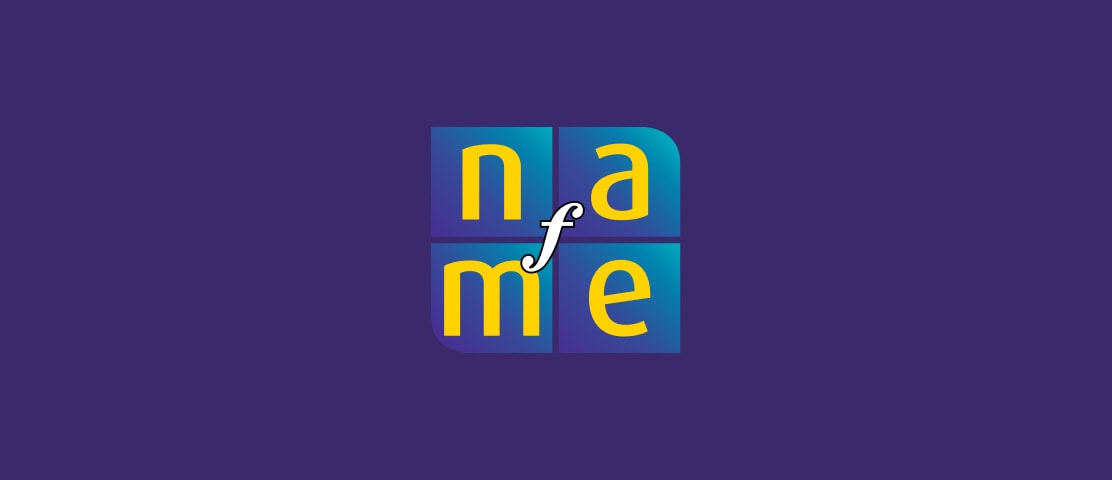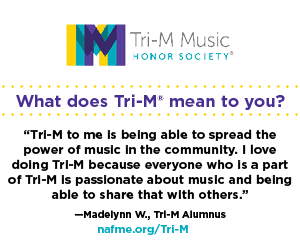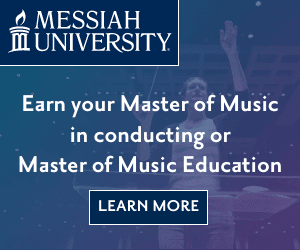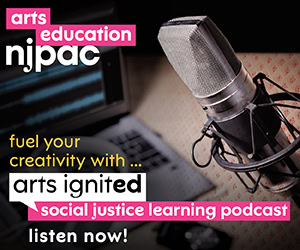/ Publications & Resources / Resource Library / Public School and Community Music Group Relationships
The National Association for Music Education
Music educators should take the first step in establishing a positive relationship with directors of community music groups that benefits the individual student as well as the schools’ music groups. Establishing a positive relationship requires a participation policy that is communicated systematically and is effective in establishing educational priorities.
Concerns
As students grow and develop, many communities around the United States offer them a wide variety of opportunities to grow musically through participation in community ensembles. In addition to being part of the many fine ensembles in our schools, students who exhibit excellence and interest in chorus, band, or orchestra may be able to participate in church ensembles, community youth ensembles, and even adult-majority municipal ensembles. While the presence of open-ended opportunities for students is a working expression of the spirit embodied in the MENC mission statement of “encouraging the study and making of music by all,” the wealth of ensemble choices in many communities brings up a central philosophical question: Are these community groups part of a coordinated effort to educate students, or are music directors competing for talented students’ participation? MENC: The National Association for Music Education believes that school and community ensembles should be devoted to the education and development of the students shared by both entities.
When community ensembles seek out the most talented and/or experienced students, they soon come up against the fact that they are competing with many other opportunities for the limited time, attention, and loyalty of those students: advanced courses in academic subjects other than music, athletics, in-school and out-of-school experiences in other arts, and after-school college preparation courses. Because many students and their parents feel that they are under extreme pressure to compete for coveted college entrance slots, students may elect to spend their time elsewhere, thus missing out on the benefits of participation.
Even when school and community ensembles in a given area are united in helping those students grow musically, school ensembles are naturally different in practice from their community counterparts. Both school and community ensembles recruit students, but the school ensembles are geographically limited to students within the public school districts in which they are based (or, in some jurisdictions, to private and parochial schools or home-schooled students from the area). Community ensembles, in contrast, typically involve students from public, private, and parochial schools in a less defined geographic area. In addition, community ensembles may choose to admit students who do not participate in school ensembles because the students have either filled their limited elective slots with other courses, chosen to drop out of the school ensemble, or are home-schooled. This widespread unrestricted recruiting may lead to problems for school ensembles and their directors by greatly increasing the challenges of developing high quality performing groups when the best performers leave their school-based groups to join community ensembles.
All ensemble directors want to meet challenging local, state and national curriculum standards and rise to the high standards set by the composers of the works they are teaching their students. School directors believe that the best educational values are achieved through the highest-quality literature and performances, which depend on participation by and the student leadership of the best musicians in their school. In addition, teachers, parents, and administrators believe that the highest-achieving students should be encouraged to perform in the school programs. Their participation enables them to develop their leadership skills and positively influence the musical experiences of all the students in the ensemble. These problems become even more pronounced when community ensembles receive local, state, or federal funding as after-school educational programs, emphasizing their responsibility to enhance the educational experience of a broad community of students. There is no simple solution to solving these problems except keeping everyone involved focused on the best possible education of the individual students.
The Music Educator’s Role
Music educators are already well aware that good programs take time to develop and that the most impressive results may take years of dedicated effort. This is particularly true for standards-based arts education.
Music educators can be leaders in establishing effective partnerships with community music organizations. As leaders, they demonstrate their commitment to student musicians by sharing their goals to enhance student learning and their strong sense of ownership in the education of students. They also encourage mutual respect among all of the adults committed to student learning, regardless of their roles.
When music educators become aware of a problem or conflict between themselves and the community ensemble, the music educator should contact the director of the community ensemble directly and collaboratively work out a solution to the problem. A win-win solution should be found so that the student or students are not caught in the middle. If a win-win solution cannot be found, it must be understood by all that school ensemble have priority.
Music educators understand that combining existing resources innovatively and creating new learning opportunities can create a synergy that can be beneficial to students. Improved student learning is the essential indicator of good partnerships among adult leaders in music education.
With their diversity of experience, their unique resources, and their ability to work with others to enrich student learning, music educators bring to these partnerships collaboration skills that they can share with others. They have been trained to acknowledge and respect differences, and they are committed to high-quality performances. They are also aware that different partners may be leaders in the various components of a single goal-in this instance, the improved music education of students.
Music educators may be willing to allow for flexibility of organization and structure in order to maintain partnerships, but in no way will they compromise students’ music education. As individual student situations become more complicated, they are prepared to work with community arts organizations to ensure that the best music education experiences are available for every student, and this includes modeling leadership roles as examples for student performance leaders. And as more opportunities are opened to students to excel by participating in extremely select ensembles, music educators who direct school ensembles understand that they may have to offer expanded opportunities to top-performing students such as mentoring less experienced students, giving them leadership responsibilities for small ensembles, or creating an “honors” chamber orchestra, if they are to retain those students in school ensembles.
Music education’s leaders understand that each year presents different challenges in optimizing opportunities for young performers. However, they also understand that the best opportunities for young performers, whether in a public school, a community arts group, or both, must be the product of a partnership of like-minded adult leaders who recognize that mutual respect is essential and that school and community music leaders must build trust and understanding if they are to accomplish the larger goals of standards-based music education for all. The question that the adult leaders must answer is: what is best for the student?
Guidelines
- All directors of ensembles that involve students should recognize that the educational benefit to students, rather than competition betwee
n ensembles, is the goal. - Directors of community ensembles must be strongly encouraged to contribute to the success of school ensembles. To this end, it is highly recommended that community ensembles adopt a written policy requiring students to be members in good standing of their school’s music ensembles unless the student has a genuine and unavoidable scheduling conflict.
- Directors of school ensembles must understand the pressures on students’ schedules and respect students’ desire to take part in music experiences outside the school.
- Directors of school and community ensembles that share student performers must communicate constantly to minimize direct scheduling conflicts for rehearsals, performances and trips. The student must not be caught in the middle between two directors.
- All school and community ensemble directors must be open about their measurable objectives for students and share plans for achieving and evaluating joint successes in the goal of helping students grow musically through ensemble participation.
- All school and community ensemble directors should convene regularly to reassess the relationship between school and community music programs and their shared goals for students.
- If the community ensemble has a Board of Directors that oversees the operation of the ensemble, it is strongly recommended that one or more positions on the Board be designated for and filled by a school ensemble director(s).
Resource Type
- Position Statement
Year Added
2003




